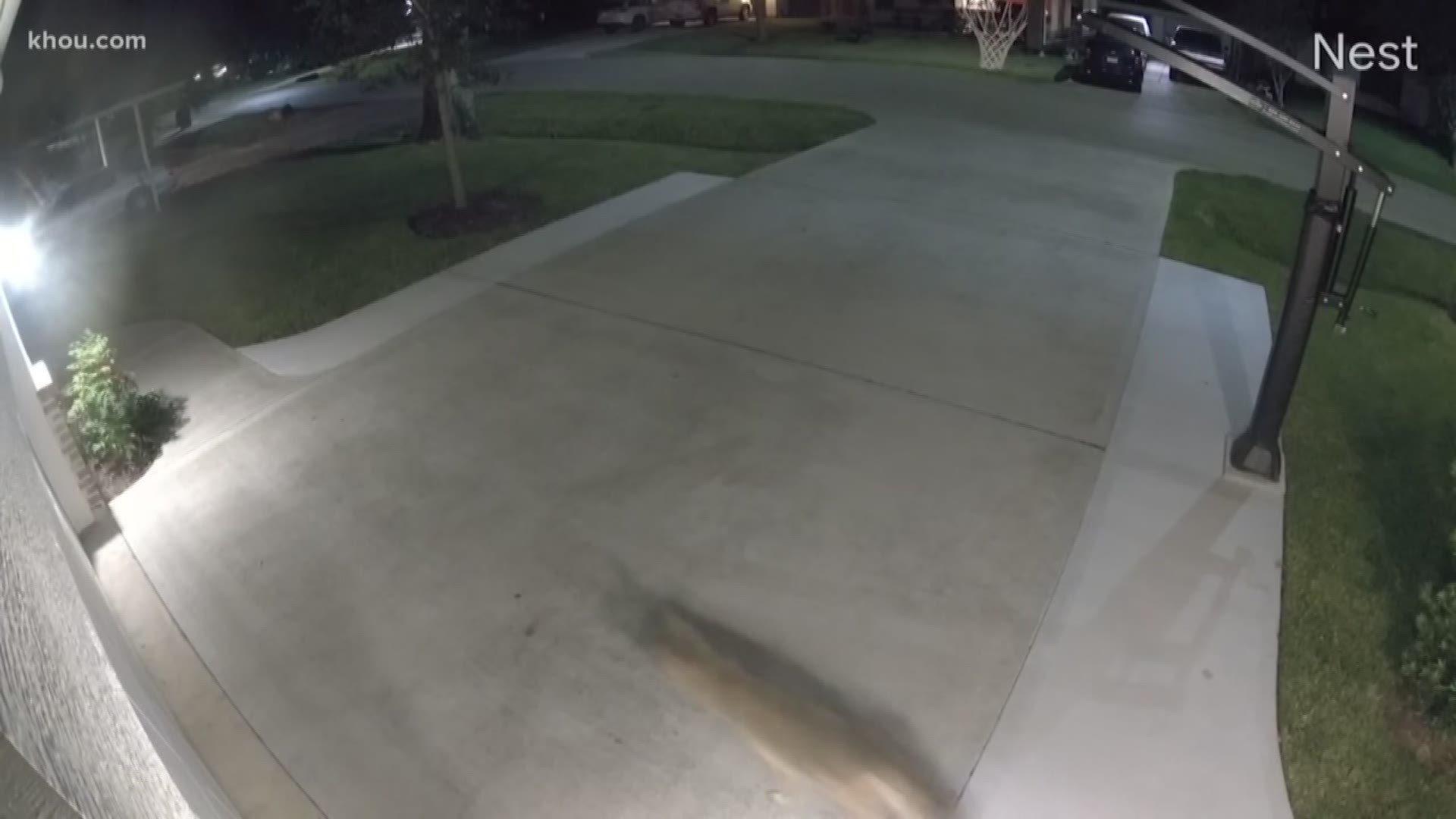HOUSTON — *Editor's Note: The above video was originally published in August 2018*
Texas Game Wardens report more coyotes showing up in urban neighborhoods due to pups leaving their dens.
People have reported seeing coyotes in their neighborhoods in areas like Spring Branch as recently as November 3.
”I was like, ‘wow, that is a huge dog, with a long bushy tail. Must be a coyote,'" said Daniel Senneff, who caught two coyotes on his home security camera walking across his driveway.
He checked his camera after waking up to the sound of screaming cats early Sunday morning.
”Typically, our neighbors have more than a few cats on their front porch and ever since that incident, haven’t really seen any of them around, so I think they’re a little bit spooked right now," said Senneff. ”It’s just a reminder that even though we are in an urban area, these animals live here with us."
”Even the idea as coyotes going after pets doesn’t happen as frequently as people are concerned it does happen," said Christine Mansfield, marketing manager at the Houston Arboretum. ”Most wild animals are more afraid of you than you are of them, and as long as you don’t harass them or bother them or feed them and try to encourage them to come to your area, they will more likely leave you alone.”
She said coyotes are usually more active at dawn and dusk, particularly in the fall and spring, both for breeding and for gathering food.
Coyotes are native to the savannah lands – a mix between grasslands and woodlands: popular areas where many Houston neighborhoods and subdivisions have popped up.
Even staff at the Arboretum had their own close encounter, finding coyote scat on one of the trails on Friday morning.
”Sometimes it’s a little harder to tell big dog or coyote but this is usually the easiest way – looking for their poop because most dogs don’t eat fruit, at least not in these quantities and also don’t eat things with fur and those are two really easy ways to tell the differences.”
Wardens said urban coyotes are considered nuisance animals, but they do not implement nuisance coyote control.
Urban and suburban coyotes are symptoms of a broader issue, TPWD reports. "People continue to expand housing subdivisions and other human development into what used to be open range wildlife habitat," the website reads.
Wardens said this is happening especially on the fringes of large metropolitan areas. They say this activity is increasing the potential for encounters and conflicts between people and wildlife.
Wardens say trapping cannot eliminate urban coyote problems, but it can be part of the solution in some situations.
Here are some tips from Texas Game Wardens on what to do if you encounter a coyote and how to keep your family safe:
- Do not feed coyotes! Keep pet food and water inside. Keep garbage securely stored, especially if it has to be put on the curb for collection; use tight-locking or bungee-cord-wrapped trashcans that are not easily opened.
- Keep compost piles securely covered; correct composting never includes animal matter like bones or fat, which can draw coyotes even more quickly that decomposing vegetable matter.
- Keep pets inside, confined securely in a kennel or covered exercise yard, or within the close presence of an adult.
- Walk pets on a leash and accompany them outside, especially at night.
- Do not feed wildlife on the ground; keep wild bird seed in feeders designed for birds elevated or hanging above ground, and clean up spilled seed from the ground; coyotes can either be drawn directly to the seed, or to the rodents drawn to the seed.
- Keep fruit trees fenced or pick up fruit that falls to the ground.
- Do not feed feral cats (domestics gone wild); this can encourage coyotes to prey on cats, as well as feed on cat food left out for them.
- Minimize clusters of shrubs, trees and other cover and food plants near buildings and children's play areas to avoid attracting rodents and small mammals that will in turn attract coyotes
- Use noise making and other scaring devices when coyotes are seen. Check with local authorities regarding noise and firearms ordinances. Portable air horns, motor vehicle horns, propane cannons, starter pistols, low-powered pellet guns, slingshots, and thrown rocks can be effective.
ALSO POPULAR ON KHOU.COM

